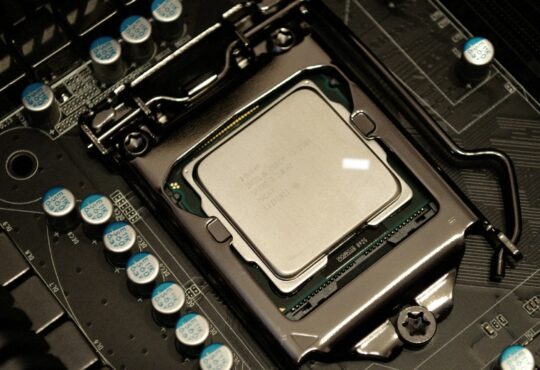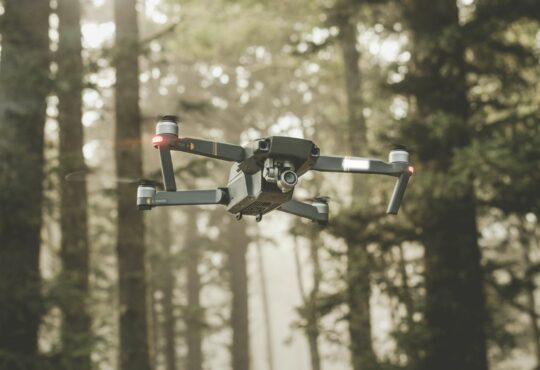Elon Musk’s aerospace company SpaceX is working on an exciting project, aiming to bring high-speed internet to everyone. Starlink is a satellite network that will aim to provide high-speed satellite internet connections to remote, hard-to-reach locations. So, is this space-internet going to work? The answer seems to be yes. A couple of hundred satellites are already in orbit and beta testers already have a Starlink internet connection.
The satellite network
In order for Starlink to work you need a clear line of sight to a satellite. So clearly, 1 won’t do it, satellites in orbit are constantly in motion so you would lose connection fairly quickly. According to Elon Musk, about 400 satellites are needed for “minor” coverage and double that for “moderate”.
Currently, SpaceX has 1261 Starlink satellites in orbit but that is only a fraction of what the goal is. SpaceX has applied for permission to launch 42000 Starlink satellites and it would not be surprising to see that number grow.
What about latency?
Previously the issue with satellite connection has always been the latency. The delay made things like video calls unusable. Part of the solution is the range they orbit at.
Starlink uses so-called Low-Earth orbit satellites which sit at a distance from earth of 180 km to 2000 km. Compare that to GEO-satellites that orbit the planet 36000 km away or the Medium-Earth orbits that cover the space in between. The plan is for Starlink to have 3 different “orbital shells” of satellites at a height of 340km, 550km, and 1110km. Currently, all the satellites are in the 550km orbital shell.
The beta test of Starlinks high-speed internet has a reported latency of 18 to 19 milliseconds. That’s actually really good. Video conferences should be no problem and if you’re bored, tabbing out from work for online gaming is a possibility as well.
How do you get Starlinks high-speed satellite internet?
Anyone can now sign up for the beta test of Starlink but there is a waiting line and a deposit required. Additionally, the amount of satellites launched is far from complete, not every area is covered. Depending on where you live you might have to wait even longer for coverage.
The number of testers is limited. SpaceX has applied for permission to set up 5 million receivers in response to the big amount of beta applications. They run a first come first served policy so getting in line early might be in your best interest. Sending in a beta application will require you to pay a deposit of $99 and then you will just have to wait.
If you do get in you’re going to have to pay an additional $499 to get your “UFO on a stick”, which is what the receiver is called. Installing the small satellite dish and router is supposed to be simple enough for you to do it yourself. Once you have it up and running the subscription cost to Starlink is $99 a month.
How fast exactly is high-speed satellite internet?
If you already have a fiber broadband connection, this is probably not for you. Starlink’s aim is for its high-speed internet to have a download speed of 150MB/s and an upload speed of 50 MB/s. Speed reports from beta testers are starting to come in and the numbers vary a bit. In Starlinks official reports they claim download speeds of 102-103MB/s and upload speed from 40-42MB/s.
The reported performance from some independent testers is lower. The average download speed according to testmy.net is 37 MB/s and tops out at 91 MB/s. Another test reports a download speed of 103 MB/s and an upload speed of 42MB/s. One can assume that the speed you get depends on your location and will improve as the amount of satellites increases.
So, how does Starlink work?
Once you got your UFO on a stick installed and turn on the terminal it will automatically scan the sky to find the satellite overhead and lock onto it. This should happen within milliseconds, despite the satellites traveling at speeds of 28000 km/h. After finding the satellite your UFO on a stick will request to join the network and then download a schedule. The schedule shows which satellites will be passing by next so it can stay online constantly and keep you connected.
The satellites also need to keep connected to each other at low latency, Starlink has been working on what they call “space laser” to solve this problem. Yes, UFO on a stick and space laser, this is not sci-fi. The space laser should result in a higher speed and lower latency for users as well as help work around issues with satellites that are not in sight of ground stations.
The engineers at SpaceX have high hopes for the laser’s potential, the speed of light is faster in a vacuum than in fiber so the potential for low latency is exciting.
Criticism of Starlink
The Starlink network is not without controversies and has received criticism from competitors as well as astrologers. The critics are pointing out issues with light pollution and space debris, while the competitors are worried that Starlink will hog too much space and others are critical of their government funding. It seems getting high speed-internet to remote areas is not without cost.
Light pollution
The issue here is simple, the low orbit satellites reflect a lot of light and that makes it hard for astrologists to do their job. The magnitude of the issue can be better understood when you realize that in August 2020 there were 6000 satellites in orbit. Compare that to the 42000 SpaceX intends to launch.
SpaceX has tried to address the problem by coating parts of the satellite black paint and putting up light shields. However, this does not make them see-through and the issue remains. If an asteroid is about to hit us, it could be good to get a heads up from the astronomers.
Space junk
Satellites that break or float out of orbit turn into space junk that clogs up around our planet. This is going to make launching rockets increasingly dangerous. 60% of the satellites in orbit in August 2020 were space junk and about 60 of Starlinks satellites are already out of orbit.
Worst case scenario would be a chain reaction of satellites crashing into space junk, creating more junk and more crashes. In the end, we could end up with too much junk around the planet to launch any spacecraft.
The competitor’s complaints
The biggest critics are the direct competitors, they think Starlink is allowed too many satellites, leaving too little room for them. Starlink has the first-mover advantage and no other system is currently close to where they are at, creating satellite networks at three different orbital shells before the competitors can act.
The other complaints are from telecommunication companies on the ground. SpaceX is going to receive $886 million in funding for making sure rural areas get high-speed internet. Their argument is that Starlink will also target places like airports that are not rural at all and will basically give them government-funded competition.
Starlink’s high-speed satellite internet and rugged computers
Many businesses that need rugged devices operate in remote areas where high-speed internet connections are hard to get or do not currently exist. One could imagine that off-shore platforms will be Starlink customers as well as companies in the forestry or mining sector. If they make sure it’s sufficiently secure, the military might be interested too and these are just a few examples.
Another area where rugged computers are used is in environmental expeditions. These often take place in extremely remote places; with unpredictable weather and difficult conditions they can be very dangerous. Starlinks high-speed satellite internet could provide lifesaving communications as well as a simple way to backup data.





